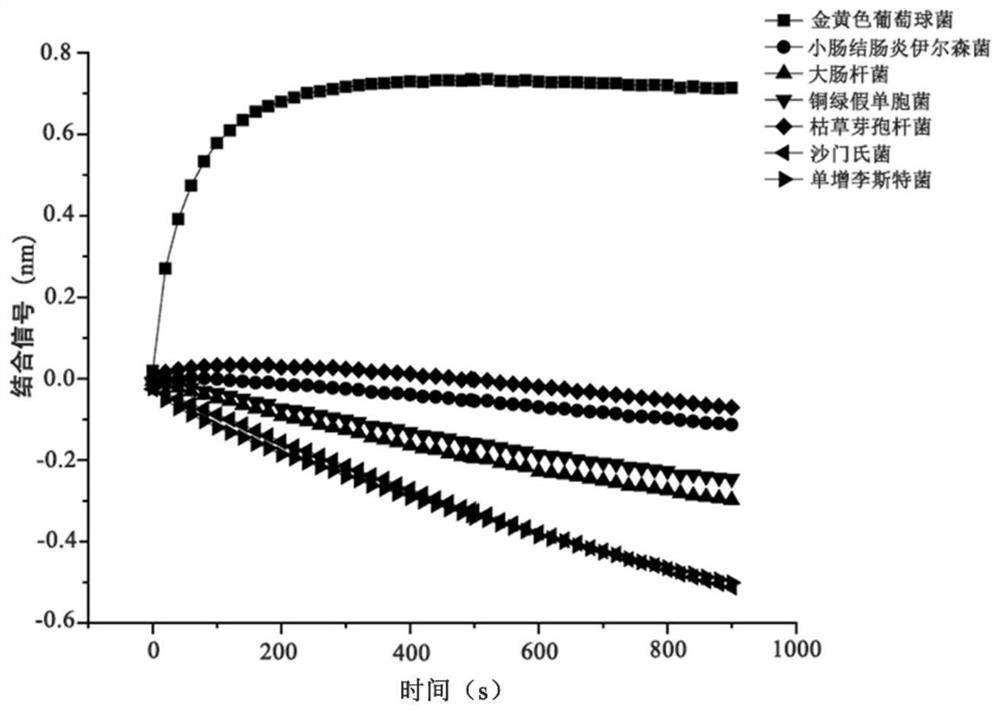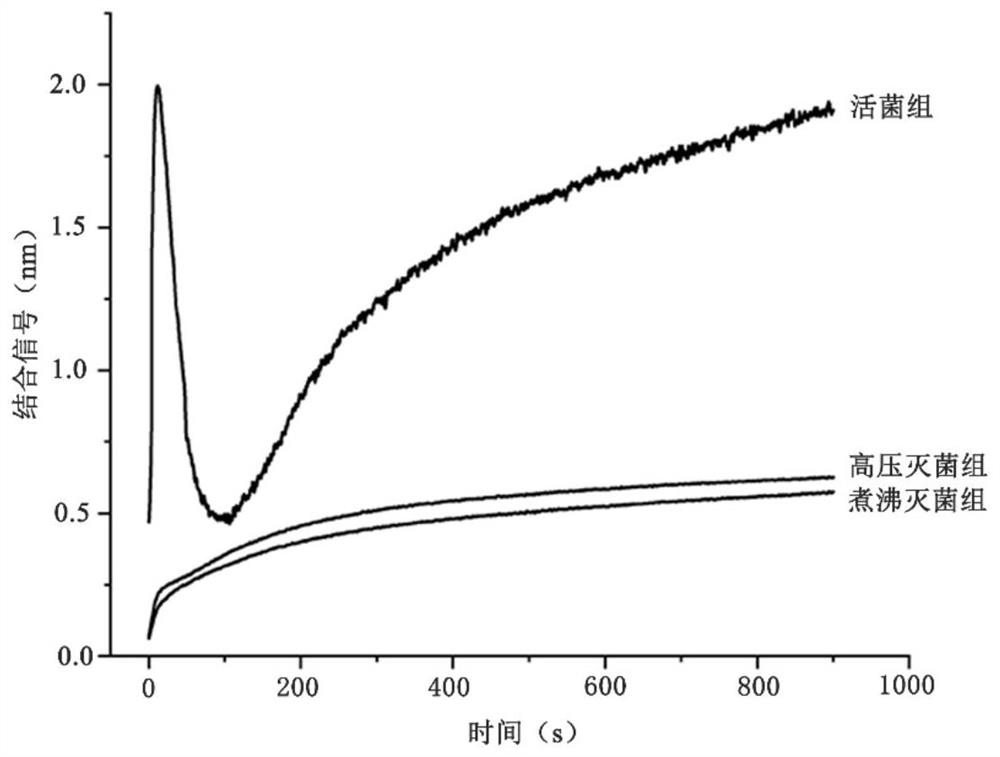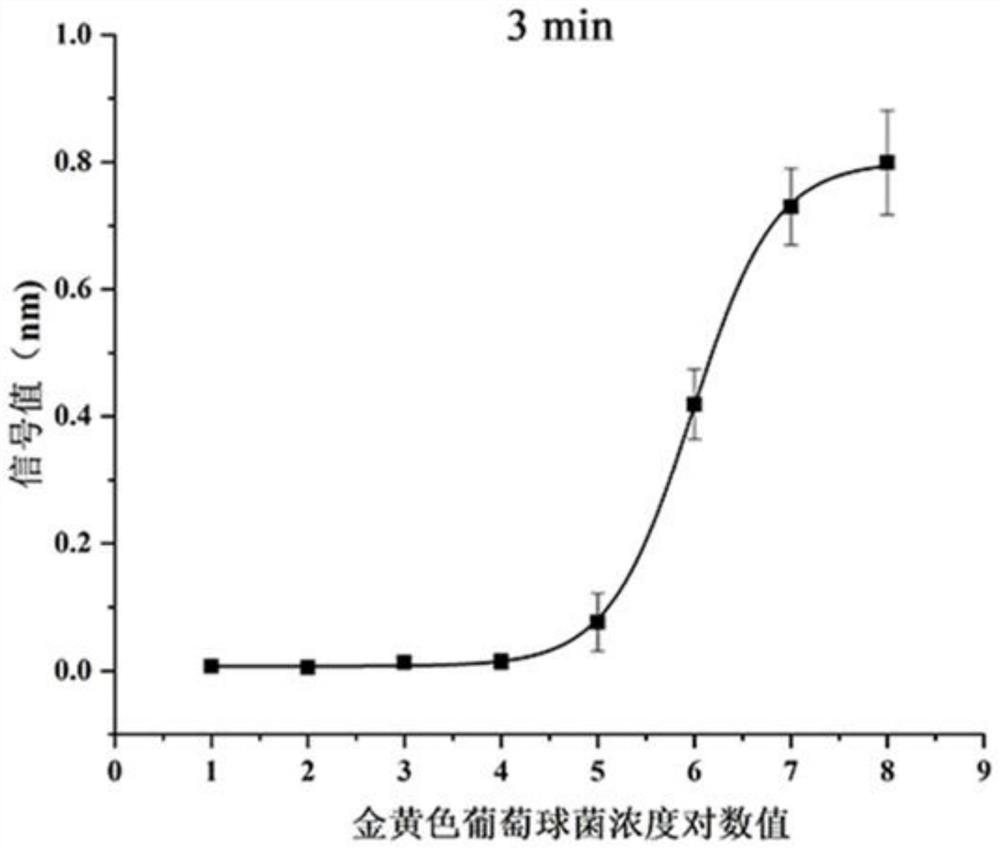Method for rapidly detecting S.aures by combining bacteriophage lyase with BLI
A phage lyase and lyase technology are applied in the field of rapid detection of S. aureus by phage lyase combined with BLI, which can solve the problems of complicated operation, many steps, and long time, and achieve the effect of simple operation, short time, and elimination of potential interference.
- Summary
- Abstract
- Description
- Claims
- Application Information
AI Technical Summary
Problems solved by technology
Method used
Image
Examples
Embodiment
[0047] as attached Figure 1-6 Shown:
[0048] The invention provides a method for rapidly detecting S.aureus by combining phage lyase LysGH15 with BLI, comprising the following steps:
[0049] 1) Sensor activation: After pre-wetting the end of the AR2G sensor in distilled water for at least ten minutes, immerse in 40 mM 1-ethyl-(3-dimethylaminopropyl) carbodiimide hydrochloride and 20 mM N -Activate in the mixed activation reagent of hydroxysuccinimide for 150-450 seconds. When the specific activation time is set to 200-300 seconds, the carboxyl group modified on the surface of the sensor is efficiently activated to ensure the effective immobilization of subsequent phage lyase;
[0050]2) Immobilization of lyase: immerse the activated AR2G sensor in 12.5-100 μg / mL mutated LysGH15 diluted with acetic acid-sodium acetate buffer solution at pH 4-6 for 600-900 seconds, specifically During operation, immerse the activated AR2G sensor in 50-100 μg / mL mutated LysGH15 diluted with ...
PUM
 Login to View More
Login to View More Abstract
Description
Claims
Application Information
 Login to View More
Login to View More - R&D
- Intellectual Property
- Life Sciences
- Materials
- Tech Scout
- Unparalleled Data Quality
- Higher Quality Content
- 60% Fewer Hallucinations
Browse by: Latest US Patents, China's latest patents, Technical Efficacy Thesaurus, Application Domain, Technology Topic, Popular Technical Reports.
© 2025 PatSnap. All rights reserved.Legal|Privacy policy|Modern Slavery Act Transparency Statement|Sitemap|About US| Contact US: help@patsnap.com



